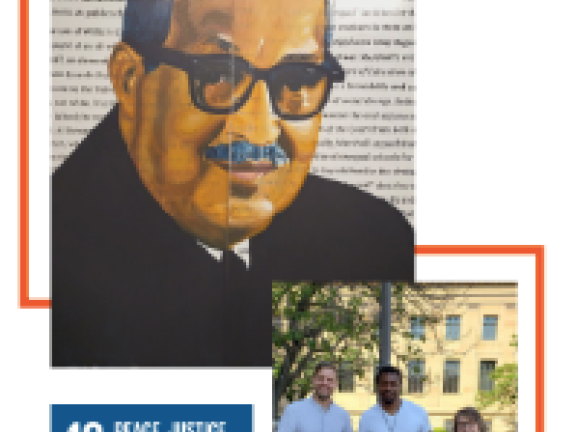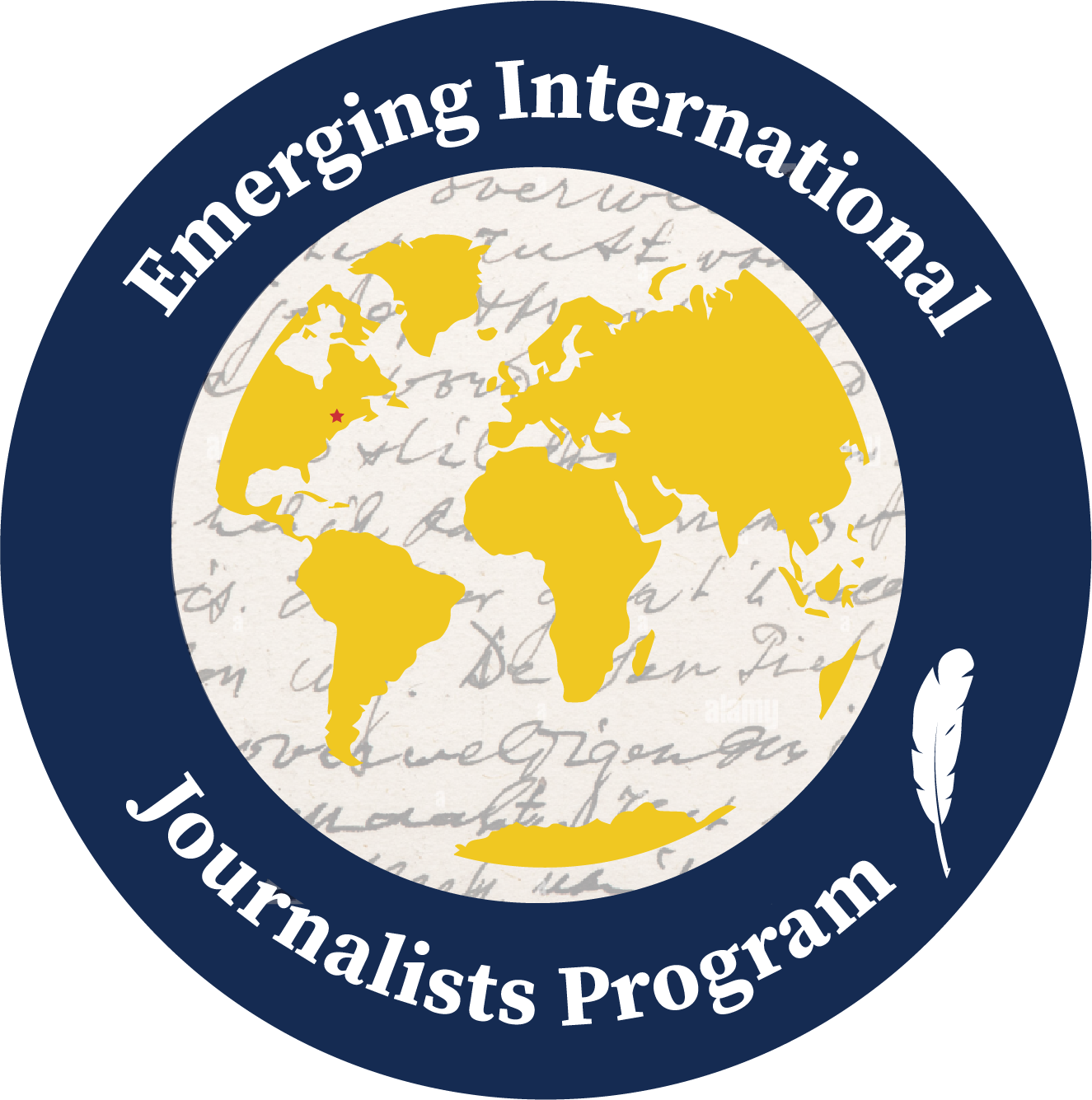Thurgood Marshall: A Beacon for Peace, Justice, and Strong Institutions

By Chloe Hunt
On June 20, Global Philadelphia unveiled the second-to-last Sustainable Development Goal, complementing SDG #16: Peace, Justice, and Strong Institutions.
In short, SDG #16 strives to “promote peaceful and inclusive societies for sustainable development, provide access to justice for all and build effective, accountable and inclusive institutions at all levels.”
This mural, painted by Russel Craig, features Thurgood Marshall–the U.S. Supreme Court’s first African American justice. Marshall represents the creation of inclusive institutions.
Nicknamed “Mr. Civil Rights,” Marshall lived through the building of inclusive societies–his grandfather was an enslaved person, and his father was a steward at a country club which only admitted white people. He was rejected from a law school solely on the basis of his race, but after getting his law degree from Howard University, Marshall used his position to promote peace and inclusivity.
According to Britannica, one of Marshall’s most notable legal victories was Murray v. Pearson in 1935, a substantial civil rights case, which ruled it unconstitutional to deny an applicant to law school on the basis of race.
In Marshall’s capacity as a private practice lawyer, he worked on cases of justice. In Smith v. Allwright in 1944, he argued against the restrictive Texas Democratic Party primary, which denied Black people the right to vote. He also worked on other monumental cases, including Sweatt v. Painter (deeming separate facilities unconstitutional) and Shelley v. Kraemer (struck down race-based housing covenants).
Perhaps Marshall’s biggest case was when he won the Brown v. Board of Education of Topeka case before the Supreme Court. Marshall, considered to be the “key strategist in the effort to end racial segregation,” argued his case before the Supreme Court, leading to the overturn of the “separate but equal” doctrine.
Marshall leaves behind a legacy of fighting for SDG #16 before its inception. As Marshall famously said, “Where you see wrong or inequality or injustice, speak out, because this is your country. This is your democracy. Make it. Protect it. Pass it on.”
For more information about this special mural, check out this link, and to learn more about Justice Marshall, check out his legacy here.
